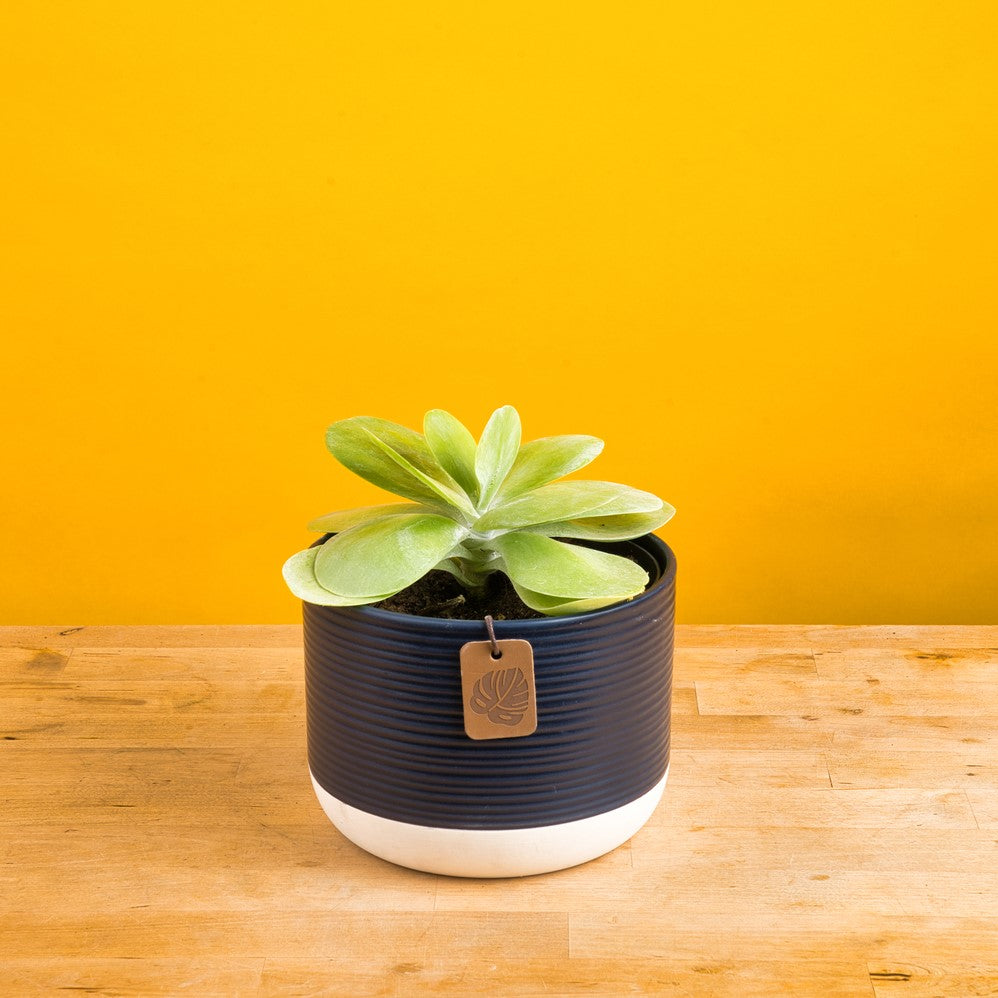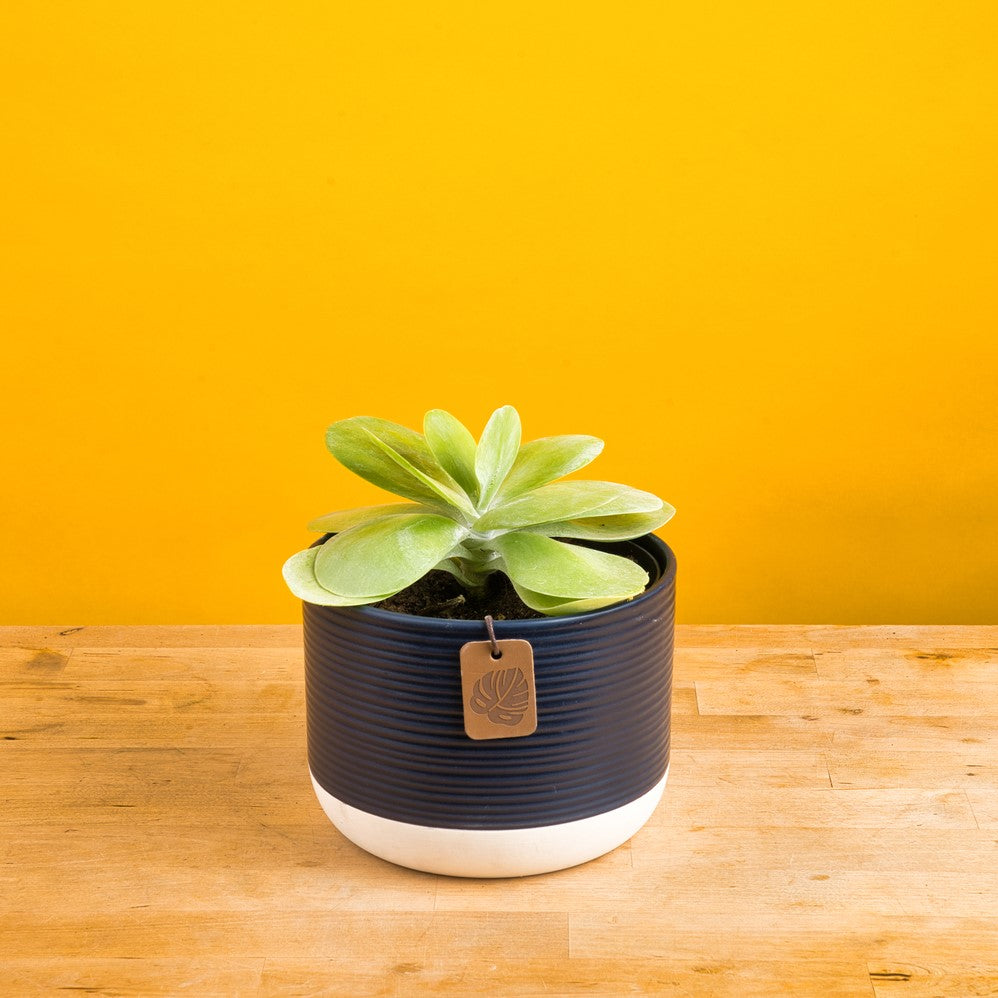Kalanchoe Thyrsiflora Succulent
-
Detail
Paddle Plant is one of our favorite low-water succulents because its big leaves add big texture to your home décor, especially as it grows up. The leaves develop from a central stem, almost making it look like it belongs underseas. Those thick leaves store moisture, so it can survive a few weeks without water if you’re traveling or accidentally forget about it. This easy succulent is shipped fresh from our farm, direct to your door and price includes shipping, handling, and a heat pack if necessary.
- Grows 12 inches tall and wide as it matures
- Trendy statement plant for bright homes and offices
- Long-lived and forgiving when grown indoors
[bio]
Plant Bio
Kalanchoe Thyrsiflora
Native to South Africa, Paddle Plant goes by lots of other names, including Flapjacks (because the leaves are pancake shaped). In addition to its big leaves, this succulent blooms with a spike of greenish-yellow flowers that tower above the mound of foliage.
Like most other cacti and succulents, Paddle Plant does best with a lot of light. Lots and lots of light. Ideally, keep it within 1 to 3 feet of a large, unobstructed south- or west-facing window (or the equivalent from plant lights). It likes average household temperatures and tolerates low humidity levels. Water it as the three-quarters or so of the potting mix dries to the touch. Avoid overwatering and keep it away from hot or cold drafts. Acclimate it to the sun prior to growing it outdoors if you wish to enjoy it outside. This will prevent unsightly sunburn.
Note: This plant may have some natural degree of toxicity and may cause discomfort or illness if ingested. Additionally, exposure to the sap of this plant may cause discomfort to individuals with a sensitivity to it upon contact. It is grown for ornamental purposes and not intended for human or animal consumption. -
Customer ReviewsNo comments







